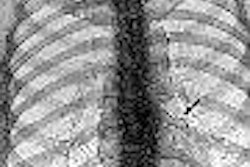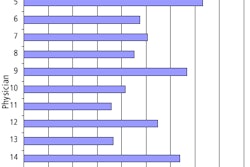The growing visibility of interventional radiology in India was evident at the 6th Asia-Pacific Congress of Cardiovascular and Interventional Radiology in New Delhi. Over 600 delegates attended the meeting, with about 400 from India.
The numbers would have been higher, but some radiologists were attending another interventional conference in Cairo, said an industry observer. The conference included 240 scientific papers and 130 lectures on various interventional topics, including some that are currently hot turf battles such as uterine fibroid embolisation (UFE).
The meeting, which incorporated the 7th annual meeting of the Indian Society of Vascular and Interventional Radiology (ISVIR), also served to highlight a major issue interventional radiologists in India face: the shortage and lack of availability of devices for procedures.
In some cases, the devices are available, but unaffordable for most. "Since most of the devices are imported, pricing is often unreasonable, relative to the average per capita income of Indian households," said Dr Sanjiv Sharma, convener of the meeting and president of the ISVIR, in a statement that was echoed by India's Vice President Bhairon Singh Shekhawat at the conference inauguration.
Shortages and high prices are especially an issue with stents and coils, although not so much with guiding catheters, wires, and balloons, said Dr Shailesh B. Gaikwad, additional professor at the All India Institute of Medical Sciences (AIIMS), in an interview with AuntMinnieIndia.com.
For instance, Gaikwad pointed out, coils used in procedures for intracranial aneurysms each cost Rs 15,000 to Rs 20,000. And if four or five coils were required for the procedure, the treatment would be unaffordable for most patients. "We need to treat them on par with lifesaving drugs and exempt them from duties," Gaikwad said.
Despite these issues, the number of interventional procedures being performed is growing, in keeping with trends worldwide. The conference included paper presentations on intervention in Budd-Chiari syndrome, thrombolysis in stroke, endovascular treatment in Takayasu's arteritis, and UFE, based on the Indian experience.
Nearly 50% of the 100-strong faculty were from India. Formed in 1997 at Trivandrum, the ISVIR now boasts of state chapters and 250 members. And one of the society's objectives is to help fledgling subspecialities with turf battles.
But a key message that also came out of the conference was that interventional radiologists need to work closely with the associated specialities and follow up on patient progress.
A successful procedure may not necessarily translate to clinical progress in all cases. Risk of complications not directly related to the procedure, surgery complications, and restenosis were some of the points discussed at the conference.
By N. Shivapriya
AuntMinnieIndia.com staff writer
November 4, 2004
Copyright © 2004 AuntMinnie.com



















